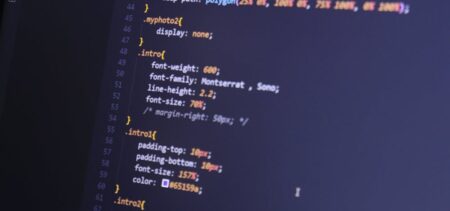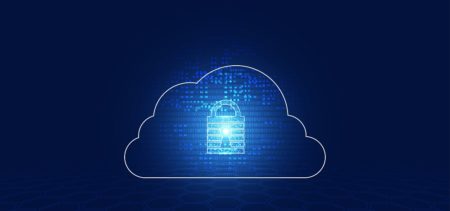Cloud computing has rapidly become the backbone of the modern digital infrastructure, powering all aspects of the digital world—from e-commerce to artificial intelligence (AI) and machine learning (ML). In 2023, Gartner predicts that worldwide public spending on cloud computing will grow by 20.7% compared to 2022, up to a total of $591.8 billion.
As such, numerous organizations and businesses will increasingly rely on cloud-based services to store and process their data. However, cloud computing can pose privacy and security concerns, and according to this Publisher of Open Access Journals (MDPI) research paper, these concerns demand an adaptive approach to successfully leverage cloud security.
To help organizations approach cloud security concerns and benefit from this technology, this article will explore the key developments and trends to optimize cloud defenses.
More Emphasis on the Zero Trust Security Model
One of the most significant trends in cloud security is the increasing importance of the zero trust security model. Traditionally, security was built around the perimeter of a network, with firewalls and other security measures such as virus and antivirus software (which are now outdated) placed at the network’s edge. But as more businesses are migrating their operations and workloads to the cloud, this perimeter-based approach to security has become less effective due to its exposure to a larger and more sophisticated attack surface.
Contrary to traditional security measures, the zero trust security model assumes that no user or device can be trusted—whether inside or outside the network perimeter. This security model enables robust encryption and access control for all three of the authentication assurance levels:
- Authenticator Assurance Level 1 permits single-factor authentication for users.
- Authenticator Assurance Level 2 requires the usage of two authentication factors, therefore performing multi-factor authentication.
- Authenticator Assurance Level 3 introduces several new authentication requirements, including the usage of a hardware-based authenticator.
These authentication assurance levels make it much more challenging for attackers to penetrate sensitive data, operational systems, and cloud environments. Due to these optimized defenses, 94% of organizations are seeking to bolster their cloud security through a zero trust approach.
Rise in Multi-Cloud Environments
A second significant trend in cloud computing is the rise of multi-cloud environments—businesses can leverage multiple cloud providers to run their services rather than rely on a single solution.
In addition, multi-clouds offer several key benefits. First, this technology allows organizations to develop applications more efficiently without adding complexities to their cloud infrastructure. Additionally, this technology provides the flexibility needed to build, migrate, and optimize applications on multiple computing environments.
Yet, managing security across multiple clouds can be challenging and risky, as each provider may have different security protocols and requirements. To address this, organizations must implement a multi-layered security approach that includes:
- Robust access management
- Encryption
- Network protection
- Threat detection and response.
Additionally, companies must invest in automation and orchestration tools to:
- Streamline security operations.
- Increase team velocity.
- Ensure consistent policy enforcement across all environments.
- Minimize potential errors.
By adopting these solutions, organizations can leverage the benefits of cloud automation, ensure frictionless work across multiple loud environments, and embrace a consistent approach to cloud security.
Increased Use of AI for Cloud Security
AI and ML are already being used extensively in cloud computing for improved automation, faster data processing, and enhanced analytics. As such, in 2023, AI and ML use cases will expand, allowing businesses to:
- Reduce operational costs and errors.
- Enable AI-SaaS integration and enhance productivity.
- Leverage better cloud security.
By analyzing large amounts of data and assessing previous cyberattacks on organizations, AI and ML can improve the accuracy and speed of threat detection and response, reducing the risk of data breaches and other security incidents. Consequently, this lessens the workloads on security teams—allowing them to enhance resource management and eliminate manual, repetitive tasks.
This year, organizations with minimum investments in AI and ML should further assess how these technologies can boost their cloud security. To provide a concise outlook, we compiled a list of how future-forward businesses leverage these technologies to:
- Automate security operations (such as vulnerability scanning and patch management) and prioritize threats based on their severity.
- Analyze user behavior, detect suspicious employee activity, and help identify insider threats.
- Enable improved compliance management and identify areas where organizations might be at risk—allowing for proactive remediation.
- Consolidate cloud security analytics, identify threat patterns and anomalies, assess security data from all cloud service providers.
Continued Focus on Compliance and Data Privacy
Compliance and data privacy are critical concerns of operating in the cloud—these standards ensure organizations meet legal and regulatory requirements for protecting sensitive data. In fact, compliance regulations such as GDPR, HIPAA, and PCI DSS are compelling companies to implement specific security controls and processes that ensure the confidentiality and integrity of sensitive information:
- Strict control of access of personal and financial data
- Monitoring of unauthorized access to data
- Data transmission encryption
Cloud security, compliance, and data security require businesses to have a clear understanding of where their data is stored, who has access to it, and how well it is being protected. Companies must also implement appropriate security measures (such as adopting a Zero Trust architecture or partnering with a trusted cloud services provider), to safeguard data from unauthorized access, modification, or disclosure.
Failing to comply with these standards can result in significant consequences. For example, GDPR fines can cost an organization up to 4% of its revenue. And when a data breach occurs due to non-compliance, the penalties aren’t limited to just fines—they can lead to lawsuits, regulatory scrutiny, and even imprisonment. Consequently, ensuring optimal compliance and data privacy in cloud security should be a top priority for modern organizations.
Conclusion
The cloud computing industry continues to rapidly evolve in 2023, driving the need for a more comprehensive approach to cloud security. As such, companies are starting to invest significantly in multi-cloud security, zero trust models, AI and ML-driven cloud computing protection tools, and better compliance strategies. By carefully assessing these four security trends, companies can take the appropriate steps to safeguard their environments and reap the benefits of cloud computing without its associated risks.






















































